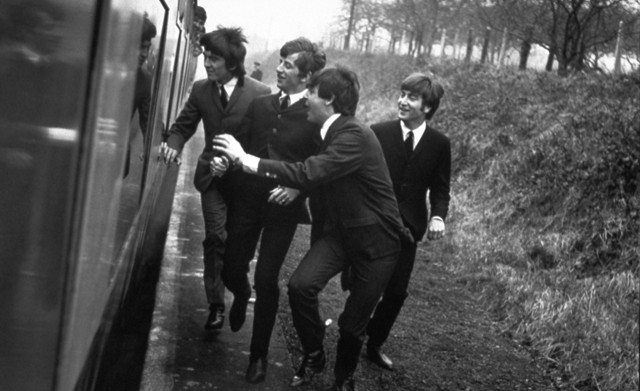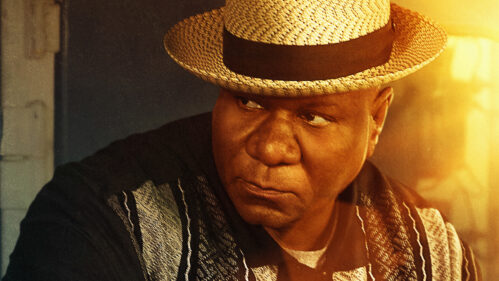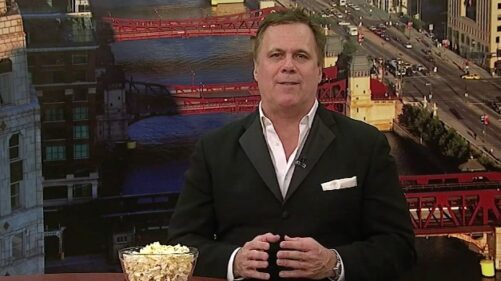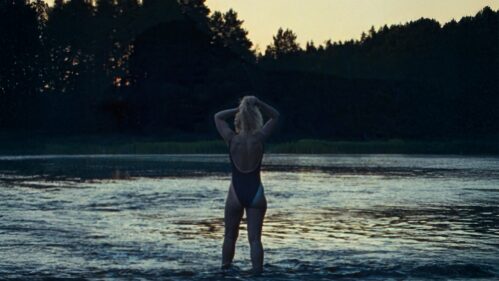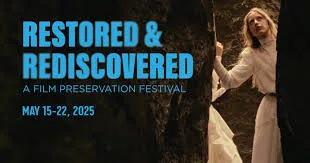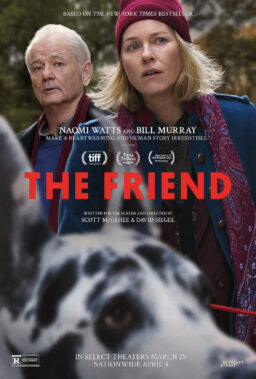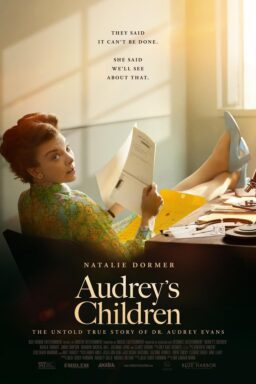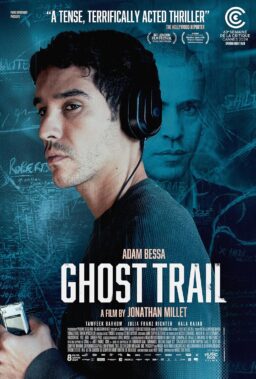By all
logic, Richard Lester deserves consideration as one of the key filmmakers to
emerge in the latter half of the 20th century. Over a career spanning 22
feature films, he has had a number of critical and commercial successes
(including one that won the top prize at Cannes), his unique directorial style—shifting effortlessly from classical elegance to formally
radical depending on the needs of the material—has
influenced any number of filmmakers over the years (one notable fan, Steven
Soderbergh, even collaborated with Lester on a book about his career, the
must-read “Getting Away With It”) and one of his films has gone on to
be enshrined as one of the all-time greats in the history of the medium. And
yet, for several reasons—the relatively low profile
that he kept as a filmmaker even at the apex of his career, the high profile of
the personalities that he worked with on many of his biggest hits, his
inability to be pigeonholed as a single entity (not even in terms of his
nationality—Lester’s name has threatened
to fade away in the minds of the movie-going public except as the guy who
directed the first two films featuring The Beatles.
Hoping to
reverse that trend and expose Lester’s wide-ranging filmography to a new
generation of moviegoers, the Film Society of Lincoln Center in New York has
put together “Richard Lester: The Running Jumping Pop Cinema
Iconoclast,” a career retrospective running August 7-13 that will
encompass 15 of his films—all but three of them being
presented in 35mm and one actually serving as its long, long-delayed debut U.S.
theatrical presentation—that illustrate how he was
able to work in any number of genres with a wit and style that was uniquely his
own. Although not a complete retrospective—some may question the absence
of his first feature, the 1962 youth-oriented musical “It’s Trad,
Dad” or his superhero epics “Superman II” (1981) and
“Superman III” (1983)—the films programmed here are
all significant works and any true movie fan attending the program will be able
to reacquaint themselves with some old favorites and perhaps get a chance to expose
themselves to a couple that they somehow missed over the years.
Born in
1932, Lester, a child prodigy who entered the University of Pennsylvania at the
age of 15, originally looked towards a career in clinical psychology but soon
shifted his focus when he went to work for a local television station and rose
through the ranks until he became a director. Believing that there were more
opportunities in his newly-chosen career path in England than in the U.S., he
transplanted to London and soon became a power in the industry, even becoming
the star of the variety series “The Dick Lester Show.” The show
didn’t last too long but the touches of surreal comedy on display attracted the
attention of no less a figure than Peter Sellers, who hired Lester to direct a
couple of “Goon Show” reunion specials and, more significantly, the
groundbreaking 1959 short film “The Running, Jumping & Standing Still
Film,” a silent comedy homage that earned an Oscar nomination for
Live-Action Short as well as a chance for Lester to move into features with
“It’s Trad, Dad!” After the success of that film, Lester was hired to
direct “Mouse on the Moon,” a sequel to the 1959 hit “The Mouse
That Roared” that saw the tiny country of Grand Fenwick stumble into the
space race when their chief export, a dreadful wine that keeps exploding in the
bottle, is actually a potent rocket fuel. Although not nearly as entertaining
as the original, in no small part because of the absence of Sellers from the
cast (though he was instrumental in getting Lester hired for the job), it did
relatively well at the box office and it led to that film’s producer, Walter
Shenson, to ask Lester to direct his latest project, a film designed around a
currently popular music group that had to be produced and distributed within a
few months—before fans moved on to the
next big thing.
The
group, of course, was The Beatles, the film in question was, of course, “A
Hard Day’s Night” (1964) and Lester’s lightly exaggerated look at a day in
the life of the newly-minted stars proved to be as groundbreaking and as
sheerly entertaining as the music that it was designed to highlight. As I am
assuming that anyone who has read this far into this piece has doubtlessly seen
the film any number of times, I am going to assume that a long explanation of
what makes it so special, even today, is unnecessary. Instead, I would like to
give a little more attention to “Help,” the 1965 reunion between
Lester and the group, whose popularity had only grown in the interim. The film,
a bit of surreal silliness involving the boys being pursued around the world by
members of a cult after Ringo gets their sacred sacrificial ring stuck on his
finger, has never had the best reputation among fans and critics alike, and
watching a story about a group of murderous fanatics trying to kill one of the
Beatles admittedly plays very differently now than it did a half-century ago.
That said, I must confess that, while acknowledging every one of the earlier
film’s achievements, I actually prefer “Help” to its predecessor.
From the first time I saw it as a young child, I fell in love with its
cheerfully cartoonish nature and offbeat knockabout comedy beats (such as a
tiger that can only be quelled by singing Beethoven’s “Ode to Joy”
and the ending dedication to Elias Howe, the inventor of the sewing machine)
and the nuttiness Lester brought to the proceedings remains as infectious today
as it did back then.

In
between the two Beatles projects, Lester made “The Knack…and How to Get
It,” an adaptation of Ann Jellicoe’s 1962 novel about the then-ascendant
youth culture in London that focused on the competition that develops between
three young man—shy schoolteacher Colin
(Michael Crawford), womanizing Tolen (Ray Brooks) and the artistic Tom (Donal
Donnelly)—to win the favors of the newly
arrived and freshly liberated Nancy (Rita Tushingham). A relatively
straightforward proposition on stage, Lester made stylistic changes to the
material that pushed it even beyond what he accomplished in “A Hard Day’s
Night,” including off-beat editing patterns, characters directly
addressing the camera and a Greek chorus of older people commenting on the
misadventures of the younger generation. When it was completed, Lester’s bold formal
experiment did not win many fans at first—Jellicoe reportedly hated what
was done to her play and executives at United Artists, who had such a hit with
“A Hard Day's Night,” dismissed it as well and considered dumping it
as the bottom half of double bills. Unexpectedly, it was entered into
competition at that year’s Cannes Film Festival and wound up winning the
coveted Palme d’Or in the process, though it did not make much of a commercial
impact in America. Today, the film is a little dated in parts but it still has
an energy to it that is undeniable, and many of the things that it has to say
about young male-female relationships are still painfully relevant today.
(Sharp-eyed viewers will notice that three of the most beautiful actresses to
ever set foot in front of a movie camera make their big-screen debuts here—Charlotte Rampling, Jacqueline Bisset and Jane Birkin.)

Despite
the critical and commercial accomplishments he had achieved to this point,
there was some rumbling in certain circles that Lester was the proverbial
emperor sans clothes and that there wasn’t much to his films once you took away
the surface flash and iconoclastic attitude. Whether these opinions reached
Lester at all is unknown, but his next couple of movies did find him stretching
outside of the comfort zone that he had established for himself with mixed
results. A 1966 feature version of the
Broadway hit “A Funny Thing Happened to Me on the Way to the Forum”
offered him the chance to step up to the big leagues but the results were
uneven—there were the nifty Stephen
Sondhem songs and comedy legend Buster Keaton in what would be his final screen
appearance but these good points were outweighed by a turbulent production (the
writer-producer was under the impression that he was going to be directing it
and when that didn’t pan out, he and Lester found themselves at loggerheads
regarding virtually everything about the production), a wildly over-the-top
performance by Zero Mostel as Pseudolous, the slave trying to help his young
master win the heart of the virginal courtesan next door in exchange for his
freedom, and the nagging sense that this was a property best appreciated on the
stage. The next year, he came up with “How I Won the War,” a WWII
satire about a group of soldiers sent behind enemy lines to build a cricket
pitch for a visiting dignitary. Lester ambitiously designed the film to be both
an anti-war statement and a protest against the jingoistic war movies that he
felt were equally insidious in how they formed pro-combat attitudes in
unsuspecting viewers. The result is an undeniably intriguing film, but one that
proved to be difficult for most viewers to embrace and when it is remembered
today, it is mostly because of the presence of John Lennon in an unassuming
supporting turn as one of the soldiers.
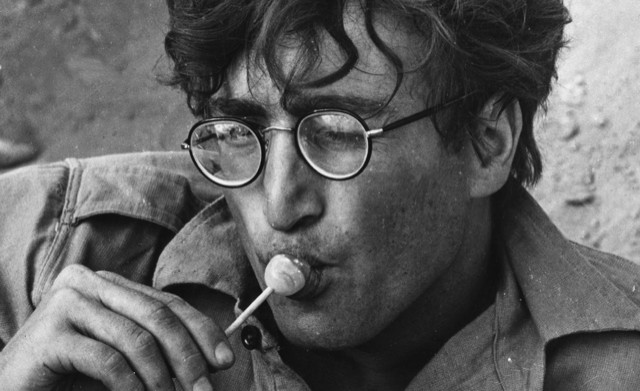
For his
next project, Lester took the bold step of returning to his home country for
the first time in fifteen years to shoot an adaptation of a novel about the
relationship that unexpectedly develops between a straight-laced doctor in the
throes of a divorce and an unhappily married free-spirit socialite that would
play out during the end days of the legendary Summer of Love in San Francisco.
The resulting film, “Petulia,” would prove to be Lester’s most deliberately
mature vision to date in the way that is observed both the relationship between
the two characters (expertly and heartbreakingly played by George C. Scott and
Julie Christie) and the relationship between Lester himself and the country
that he once called home but now had difficulty recognizing anymore. Released
during a particularly chaotic point in American history—it premiered a week after the assassination of Robert F.
Kennedy—“Petulia” was a
non-starter at the box-office and sharply divided critics between those who
found it a revelation and those who found it a sour and unpleasant mess. In
subsequent years, however, opinions of the film have shifted greatly and
“Petulia” is now generally considered to be one of the high-water
marks of Lester’s entire career and the first time that he allowed a genuine
emotional core to coexist with the cynical social satire. Even today, its final
images still retain enough power to inspire a tear or two in the eyes of even
the most jaded of moviegoers.
Although
“Petulia” would become his third under-performer at the box office in
a row, Lester still had a certain amount of clout in the movie industry and he
would invest virtually all of it in his next project, which would prove to be
the darkest, strangest and most formally daring work of his career. This was
“The Bed Sitting Room,” a deeply surreal and blackly comic adaptation
of the Spike Milligan/John Antrobus play set a few years after a nuclear war
(lasting 2 minutes and 28 seconds) has devastated most of the world and which
follows a handful of survivors as they wander through the wreckage of what was
once London. A young woman (Rita Tushingham) is 17 months pregnant and lives on
the still-functioning Circle Line train with her parents. The BBC is reduced to
one man who goes door-to-door to read the news from behind the screens of
hollowed-out televisions. A lord (Sir Ralph Richardson) is convinced that he is
about to mutate into a bed-sitting room. The National Health Service has been
reduced to one male nurse played by Marty Feldman and the entire police force
consists of two officers (Dudley Moore and Peter Cook) who do nothing but
advise anyone they encounter to “keep moving” so as to prevent them
from being targets of a future war. The monarchy, by the way, is now in the
hands of Mrs. Ethel Shroake, a former maid of the Queen’s who is the closest in
succession to the throne.
Watching
“The Bed Sitting Room” today, it seem incredible that such a thing
could have ever made it through the production process. The comedy is both
pitch-black and of a decidedly British nature, and the final third veers into
outright tragedy before a conclusion that tries to find a small glimmer of hope
amidst all the chaos and horror and astonishingly manages to pull it off while
staying true to the material. Needless to say, when the studio heads at United
Artists took a look at it, they were appalled at what they saw (to be fair, it
seems that the famously hands-off organization was still under the impression
that Lester was doing a musical version of Joe Orton’s “Up Against
It” starring Mick Jagger, the project he had been working on before
shifting his focus after that one fell through) and shelved it for more than a
year. When it did finally appear in 1970, it was such a bomb with critics and
audiences alike that not only did it fail to make a cent at the box office, it
derailed Lester’s directorial career entirely for the next few years.
Although
it would take a few years for him to get back into the filmmaking game in the
Seventies, his eventual return would yield a variety of intriguing films that
found Lester dabbling in a number of unusual genres. His return from the
wilderness began when the father/son producing team of Alexander and Ilya
Salkind hired him to direct an epic production of Alexandre Dumas’ “The
Three Musketeers,” a project that he had once contemplated as a vehicle
for the Beatles. Instead, Lester brought together an all-star cast, including
Michael York, Oliver Reed, Richard Chamberlain, Faye Dunaway, Christopher Lee,
Raquel Welch, Spike Milligan and Charlton Heston and punched up the story with
a lot of humor and elaborate swordplay. Although Lester conceived it to be one
long film, the Salkinds decided to split it into two parts—“The Three Musketeers” (1973) and “The Four
Musketeers” (1974)—and while this move enraged
the actors (who were now making two movies for the price of one), both parts
proved to be hugely popular with critics and audiences alike and remain
arguably the definitive screen adaptation of the story.
Between
the releases of the two Musketeers films, Lester managed to squeeze out another
film when he was hired at the last second to take over the production of
“Juggernaut,” a suspense thriller about a bomb disposal team (led by
Richard Harris) who are sent off to disarm a number of explosive devices that
have been hidden throughout an ocean liner in the middle of the North Atlantic
sea while British police back on shore desperately try to uncover the identity
of “Juggernaut,” the person who vows to blow up the ship unless they
are paid $1.5 million dollars. (The story was inspired by a real-life bomb hoax
involving the QE2 in 1972.) An uncommonly serious-minded effort for Lester
(though it does have a couple of moments of humor), the film is as tense and
gripping as they come as Lester manages to keep the white knuckle material
going for nearly two solid hours, aided in no small part by an excellent cast
that also included the likes of Omar Sharif, Anthony Hopkins, Shirley Knight,
Ian Holm and David Hemmings.
For his
next film, Lester returned to a once-shelved plan to bring the adventures of
Sir Harry Paget Flashman, the lying, cheating, thieving and cowardly rat at the
center of a series of comedic adventure novels by George MacDonald Fraser, to
the big screen. Based on the second book in the series, “Royal Flash”
(1975) followed Flashman (Malcolm McDowell) as he is forced by Otto von
Bismarck (Oliver Reed) to impersonate a Danish prince about to marry a German
princess (Britt Ekland) as part of his diabolcal plan to unify Germany under
his rule. The film is funny enough in parts and McDowell is pretty much perfect
as Flashman but the plot is little more than a rehash of “The Prisoner of
Zenda” and the blend of strange humor and action did not jell as well as
it did with the Musketeers movies and critics and viewers alike were left cold
by it.

A far
more successful revisionary look at a familiar narrative, Lester’s next film,
“Robin and Marian” (1976) offered moviegoers the sight of a now-aging
Robin Hood (Sean Connery) returning from the Crusades at last to woo Maid
Marian (Audrey Hepburn), who has become an abbess in the interim, while
rescuing her from the depravations of the Sheriff of Nottingham (Robert Shaw).
While the film may lack the derring-do of previous screen incarnations of the
myth, “Robin and Marian” is nevertheless a glorious work in which the
perfectly cast Connery (in arguably his best performance of the Seventies) and
Hepburn (making her first screen appearance in 8 years) demonstrate incredible
screen chemistry and Lester dials down the comedy and visual flash so as to let
it shine through even brighter. In the long history of Robin Hood films, this
one probably ranks behind only the Errol Flynn classic “The Adventures of
Robin Hood” (1938), and there are times when I am convinced that it beats
out even that one.
The rest
of the decade saw Lester tackling a number of unfamiliar genres with mixed
results. “The Ritz” (1976) was an adaptation of the Terrence McNally
play that is set entirely within the confines of a gay bathhouse in Manhattan
where a straight businessman (Jack Weston) has gone to hide out from his
mobster brother-in-law (Jerry Stiller) with the usual wacky results. This
attempt to do an updated version of the classic screwball comedies of old must have
seemed promising on the page, but the results are a little too forced at times
for their own good and the laughs never really build, though Lester does get
good performances from the cast.

“Butch and Sundance: The Early
Years” (1979) remains one of the oddest entries in his filmography—not only was he entering the unfamiliar realm of the
Western but he was doing it with a prequel to one of the most beloved films of
its time and one which derived much of its power from star casting that simply
wasn’t possible this time around. The end result is not quite as bad as its
reputation suggests, but the combination of a dramatically limited narrative
and two stars (Tom Berenger and William Katt) who were simply not Paul Newman
and Robert Redford helped to doom it. Far more interesting was “Cuba”
(1979), a romantic melodrama set against the fall of the Batista government and
the rise of Fidel Castro that starred Sean Connery as an ex-soldier hired to
train Batista’s men to fend off Castro’s army, a mission that he concedes from
the start is doomed to fail. While there, he runs into an old flame (Brooke
Adams) who is now married to a sleazy plantation owner and their affair
rekindles amidst the chaos of the ever-growing revolution. The parallels to
“Casablanca” are obvious, but Lester finds a way to make the material
seem fresh (something that Sydney Pollack was unable to do a decade later with
the similar “Havana”) and the romance between Connery and Adams
generates some heat. Like many of Lester’s best works, this floundered in its
original release but is ripe for rediscovery.

Lester
rebounded commercially fairly quickly when his job serving as an uncredited
producer on “Superman” (a ploy by the Salkinds to goad director
Richard Donner, with whom they were feuding, to quit) led to his being asked to
direct “Superman II,” the result of the Salkinds pulling another “Three
Musketeers” by trying to do two movies at once. Although the production
was rocky and Lester was required to utilize footage that Donner had shot
(including all the stuff with Gene Hackman), the resulting film was a hugely
entertaining work that saw Lester shift the tone from the straightforward epic
feel of its predecessor to some more overtly comic book in nature—ironic since Lester claimed to have never read and comics
before and to have had only the vaguest understanding of what Superman was in
the first place.
“Superman
III” was also a Lester film, and while it’s a little
better than its reputation, the picture is undone by a lame villain (Robert Vaughn as a
standard megalomaniacal millionaire who belongs in an episode of
“Batman“) and the need to shoehorn Richard Pryor, then at the height
of his box-off popularity, into a plot that simply did not need him.
“Finders Keepers” (1984) was another stab at screwball farce, involving
a fugitive (Michael O'Keefe) who boards a train with a stolen coffin that
contains millions of dollars inside. Despite a decent cast (that also includes
Beverly D'Angelo, David Wayne, Pamela Stephenson and a then-unknown Jim
Carrey), it just never pulled together and is probably the most utterly
indistinct film that Lester ever made.
After a
five-year hiatus from filmmaking, Lester returned to the site of one of his
greatest former glories when he took on “The Return of the
Musketeers” (1989), an adaptation of Dumas’s “Twenty Years
After” that reunited several cast members from the original films
(including Michael York, Oliver Reed, Richard Chamberlain, Christopher Lee and
Roy Kinnear) along with newcomers C. Thomas Howell (as the son of Athos) and
Kim Cattrall (as the vengeance-seeking daughter of Milady de Winter) for more
derring-do. During the production of the film, tragedy struck when Roy Kinnear,
who had worked with Lester several times in the past, was thrown from his horse
during the shooting of a scene and broke his pelvis. While being treated for
his injuries in a Spanish hospital, he had a heart attack and died. The
incident crushed Lester, and since he no longer felt confident of his ability
to protect his actors from harm, he essentially retired from filmmaking and
while he never made a formal announcement along those lines, the only thing
that he has directed since then was “Get Back” (1991), a film
chronicling Paul McCartney’s sold-out 1989 tour. To add insult to fatal injury,
“The Return of the Musketeers” failed to find distribution in the
U.S. and wound up making its debut on cable in 1991, making its showing at this
retrospective its unofficial and long-delayed U.S. theatrical premiere.
Richard
Lester has been a major force in the world of cinema over the last half-century.
The fact that he is not considered one of the great filmmakers of his time is
one of those sad flukes of cinema history that a retrospective like this will
hopefully help to rectify. He may be most famous as “The Man Who Framed
The Beatles,” as one biography described him, but as anyone who checks out
some of his other films will quickly realize, he was much more than that.
For more
details on “Richard Lester: The Running Jumping Pop Cinema
Iconoclast,” running August 7-13 at the Film Society of Lincoln Center, go
to the official
site.

